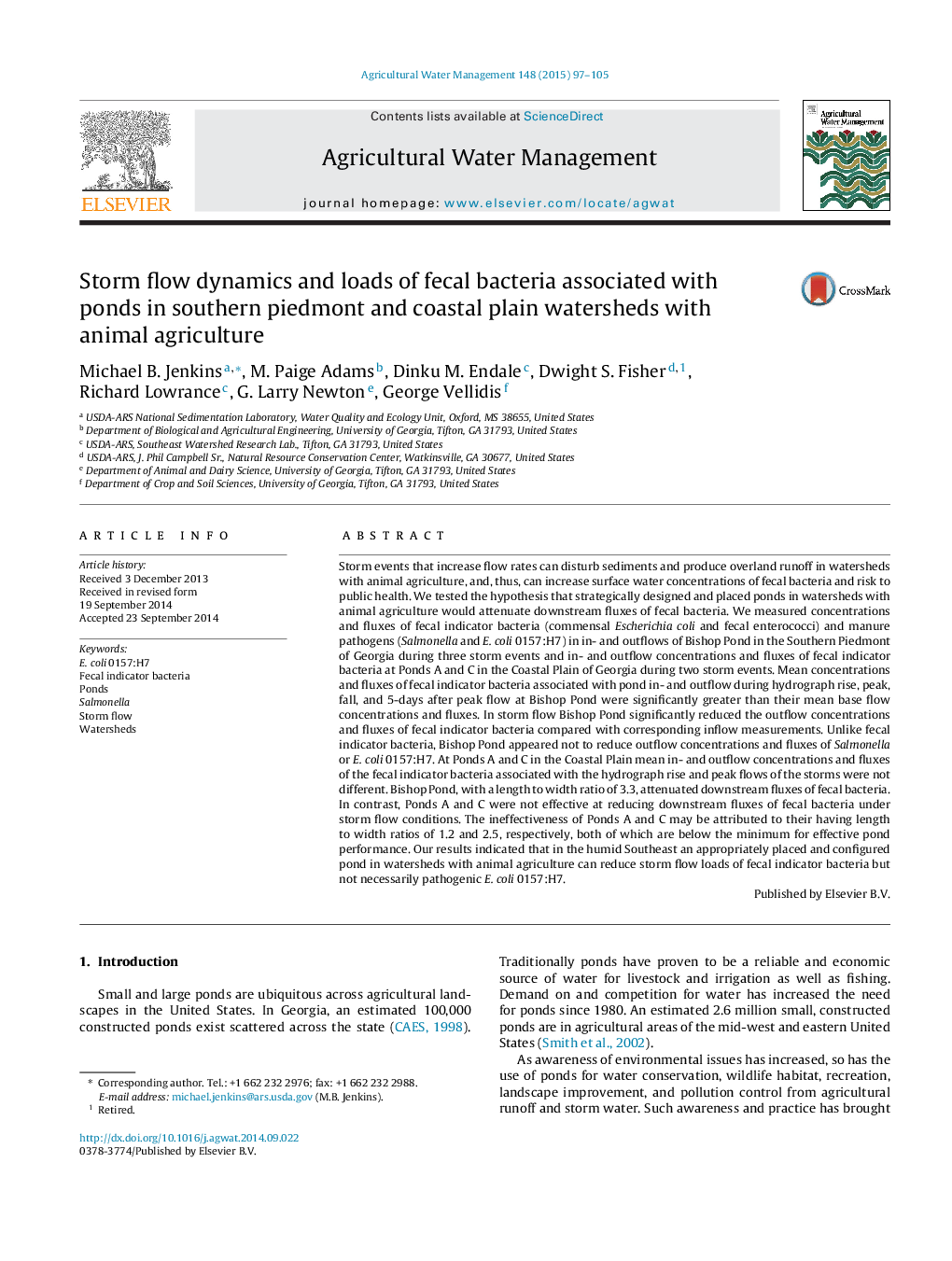| کد مقاله | کد نشریه | سال انتشار | مقاله انگلیسی | نسخه تمام متن |
|---|---|---|---|---|
| 6363798 | 1622931 | 2015 | 9 صفحه PDF | دانلود رایگان |
عنوان انگلیسی مقاله ISI
Storm flow dynamics and loads of fecal bacteria associated with ponds in southern piedmont and coastal plain watersheds with animal agriculture
ترجمه فارسی عنوان
دینامیک جریان طوفان و بارهای باکتری های مدفوع مرتبط با حوضچه های دریای جنوبی و حوضه های دشت ساحلی با کشاورزی حیوانات
دانلود مقاله + سفارش ترجمه
دانلود مقاله ISI انگلیسی
رایگان برای ایرانیان
کلمات کلیدی
موضوعات مرتبط
علوم زیستی و بیوفناوری
علوم کشاورزی و بیولوژیک
علوم زراعت و اصلاح نباتات
چکیده انگلیسی
Storm events that increase flow rates can disturb sediments and produce overland runoff in watersheds with animal agriculture, and, thus, can increase surface water concentrations of fecal bacteria and risk to public health. We tested the hypothesis that strategically designed and placed ponds in watersheds with animal agriculture would attenuate downstream fluxes of fecal bacteria. We measured concentrations and fluxes of fecal indicator bacteria (commensal Escherichia coli and fecal enterococci) and manure pathogens (Salmonella and E. coli 0157:H7) in in- and outflows of Bishop Pond in the Southern Piedmont of Georgia during three storm events and in- and outflow concentrations and fluxes of fecal indicator bacteria at Ponds A and C in the Coastal Plain of Georgia during two storm events. Mean concentrations and fluxes of fecal indicator bacteria associated with pond in- and outflow during hydrograph rise, peak, fall, and 5-days after peak flow at Bishop Pond were significantly greater than their mean base flow concentrations and fluxes. In storm flow Bishop Pond significantly reduced the outflow concentrations and fluxes of fecal indicator bacteria compared with corresponding inflow measurements. Unlike fecal indicator bacteria, Bishop Pond appeared not to reduce outflow concentrations and fluxes of Salmonella or E. coli 0157:H7. At Ponds A and C in the Coastal Plain mean in- and outflow concentrations and fluxes of the fecal indicator bacteria associated with the hydrograph rise and peak flows of the storms were not different. Bishop Pond, with a length to width ratio of 3.3, attenuated downstream fluxes of fecal bacteria. In contrast, Ponds A and C were not effective at reducing downstream fluxes of fecal bacteria under storm flow conditions. The ineffectiveness of Ponds A and C may be attributed to their having length to width ratios of 1.2 and 2.5, respectively, both of which are below the minimum for effective pond performance. Our results indicated that in the humid Southeast an appropriately placed and configured pond in watersheds with animal agriculture can reduce storm flow loads of fecal indicator bacteria but not necessarily pathogenic E. coli 0157:H7.
ناشر
Database: Elsevier - ScienceDirect (ساینس دایرکت)
Journal: Agricultural Water Management - Volume 148, 31 January 2015, Pages 97-105
Journal: Agricultural Water Management - Volume 148, 31 January 2015, Pages 97-105
نویسندگان
Michael B. Jenkins, M. Paige Adams, Dinku M. Endale, Dwight S. Fisher, Richard Lowrance, G. Larry Newton, George Vellidis,
